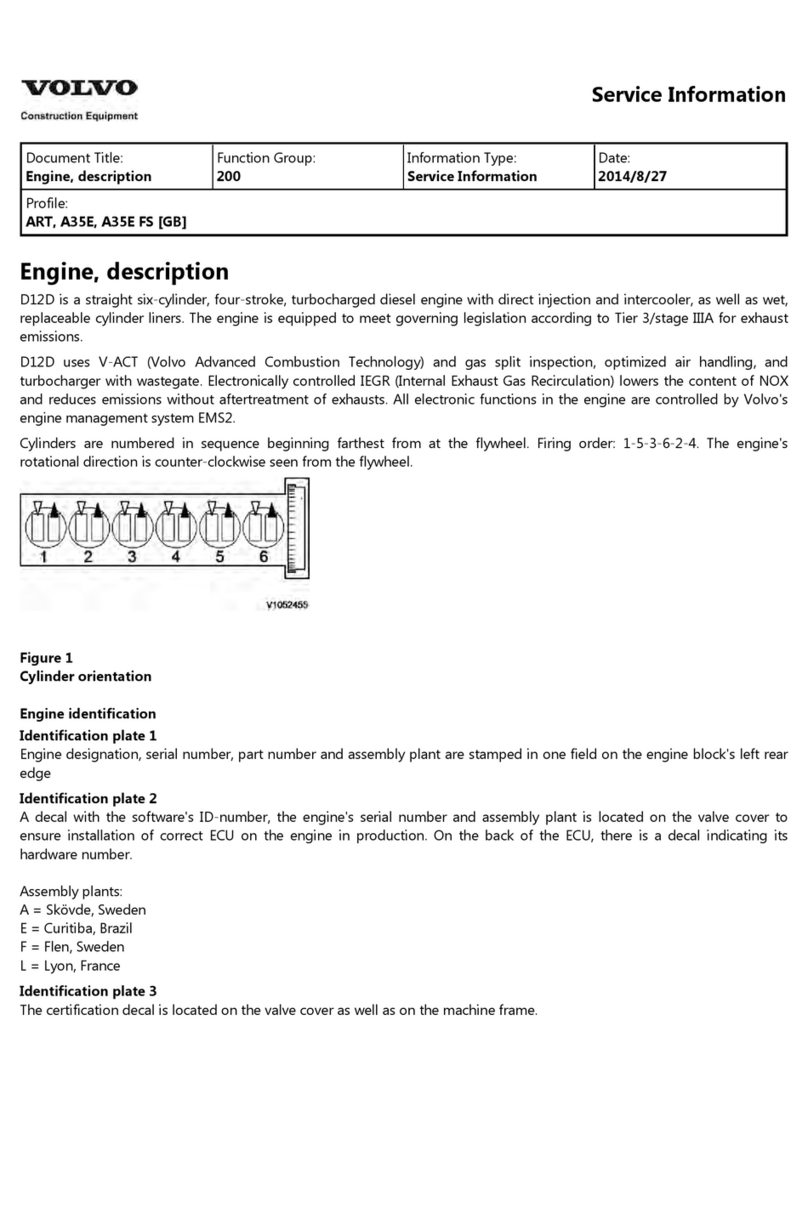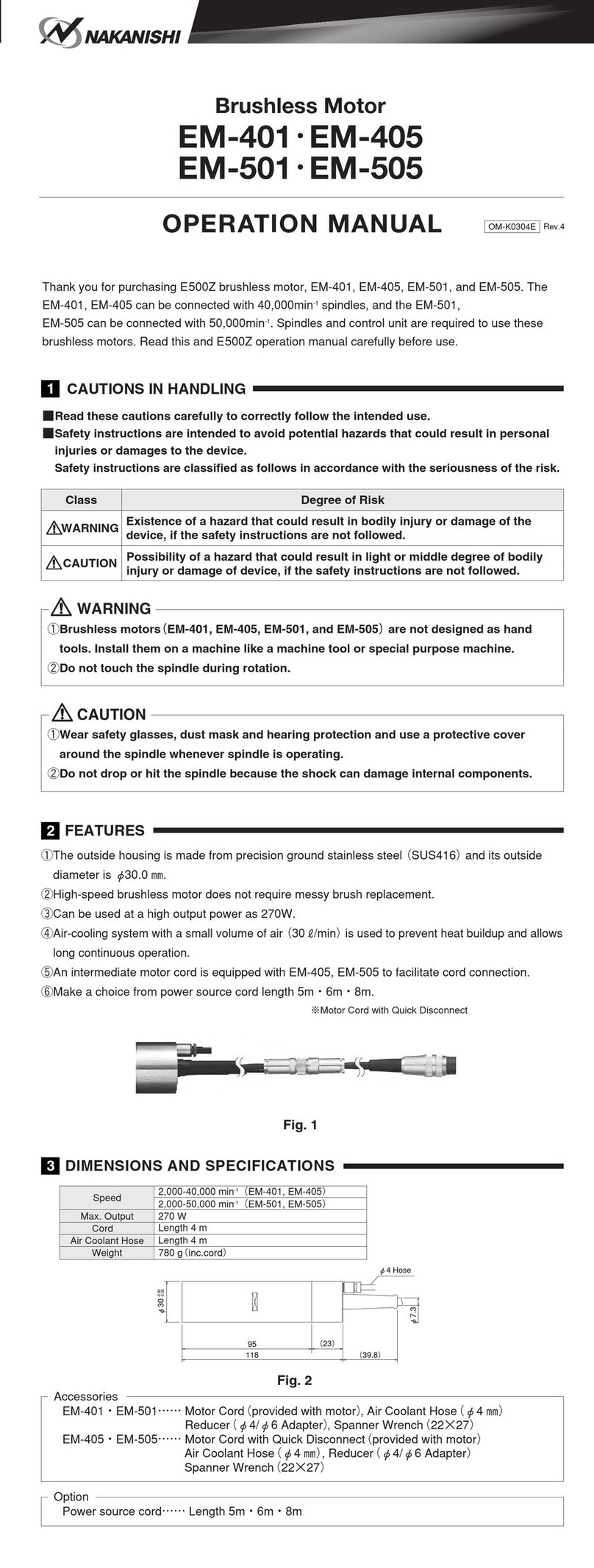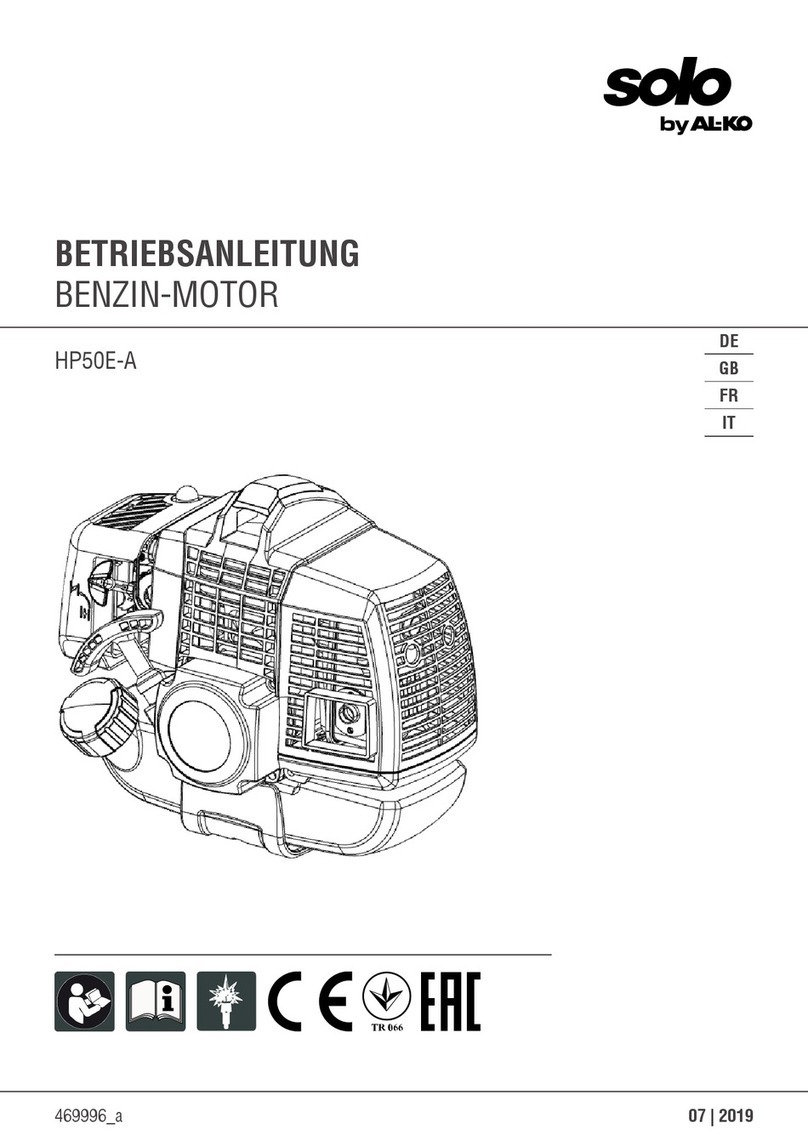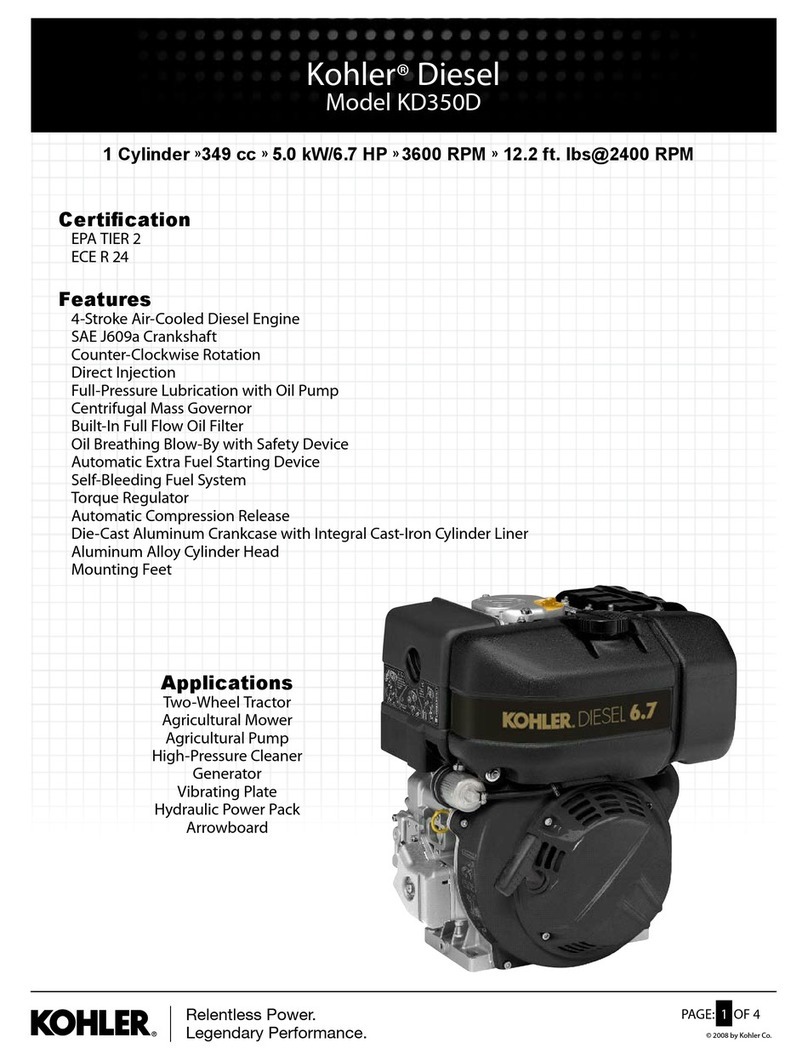Allis-Chalmers 3500 MK2 Installation and operation manual

OPERATING
AND
MAINTENANCE
_
MANUAL
MODEL
3500
MARK
II
GENERATOR
DRIVE
ENGINES
ALLIS-CHALMERS
ENGINE
DIVISION
HARVEY,
ILLINOIS
60426,
USA
Printed
in
USA
Form:
TM-5071-
1
^
-
•
(5-75)


AVOID
ACCIDENTS
MOST
ACCIDENTS,
WHETHER
THEY
OCCUR
IN
INDUSTRY,
ON
THE
FARM,
AT
HOME
OR
ON
THE
HIGHWAY,
ARE
CAUSED
BY
THE
FAILURE
OF
SOME
INDIVIDUAL
TO
FOLLOW
SIMPLE
AND
FUNDAMENTAL
SAFETY
RULES
OR
PRECAUTIONS.
FOR
THIS
REASON
MOST
ACCIDENTS
CAN
BE
PREVENTED
BY
RECOGNIZING
THE
REAL
CAUSE
AND
DOING
SOMETHING
ABOUT
IT
BEFORE
THE
ACCIDENT
OCCURS.
REGARDLESS
OF
THE
CARE
USED
IN
THE
DESIGN
AND
CONSTRUCTION
OF
ANY
TYPE
OF
EQUIPMENT
THERE
ARE
MANY
CONDITIONS
THAT
CANNOT
BE
COMPLETELY
SAFEGUARDED
AGAINST
WITHOUT
INTERFERING
WITH
REASONABLE
ACCESSIBILITY
AND
EFFICIENT
OPERATION.
IT
IS
THE
RESPONSIBILITY
OF
USERS
TO
PROVIDE
AND
INSTALL
GUARDS
OR
SAFETY
DEVICES
WHICH
MAY
BE
REQUIRED
BY
RECOGNIZED
SAFETY
STANDARDS
OR
BY
THE
OCCUPATIONAL
SAFETY
AND
HEALTH
ACT
OF
1970
AND
ITS
SUBSEQUENT
PROVISIONS.
A
careful
operator
i$
the
best
insurance
against
an
accident
The
complete
observance
of
one
simple
rule
would
prevent
many
thousand
serious
injuries
each
year.
That
rule
is:
Never
attempt
to
clean,
oil
or
adjust
a
machine
while
it
is
in
motion.

FOREWORD
This
manual
is
provided
to
give
the
operator
essential
information
regarding
proper
operation
and
maintenance
of
Allis-Chalmers
diesel
engines
and
auxiliary
equipment.
The
manual
contains
information
and
instructions
on
proper
operation.
To
keep
the
unit
op¬
erating
at
its
maximum
efficiency,
the
manual
should
be
read
by
the
operator
and
by
those
responsible
for
the
maintenance
of
the
unit.
An
important
item
in
prolonging
the
life
of
the
unit
is
to
keep
dirt
and
other
foreign
particles
away
from
its
vital
parts.
Allis-Chalmers
has
taken
precautions
in
the
design
of
the
equip¬
ment
to
safeguard
against
dirt
and
other
foreign
materials
from
reaching
the
working
parts
under
normal
operating
conditions.
The
operator
must
also
take
precautions
to
assure
that
the
oil,
water,
and
fuel
are
always
kept
clean,
and
that
air
for
combustion
is
always
filtered.
This
can
be
accomplished
by
the
proper
storage
and
handling
of
fuel
and
lubricating
oils
and
by
following
Allis-Chalmers
recommendations
in
regard
to
lubricating
oil
specifications
and
change
intervals,
fuel
specifications,
maintenance
of
filters,
air
cleaner
servicing,
andproper
care
of
the
cooling
system.
To
assure
the
best
results
and
maintain
the
high
quality
of
the
equipment,
it
is
important
that
Allis-Chalmers
parts
are
always
used
when
new
parts
are
required.
IMPORTANT:
ALWAYS
FURNISH
MODEL
AND
ENGINE
SERIAL
NUMBER
WHEN
ORDERING
PARTS.
Many
owners
of
Allis-Chalmers
equipment
rely
upon
the
Service
Department
of
our
Dealers
for
all
work
other
than
routine
maintenance
and
adjustment.
This
practice
is
encouraged
as
our
Dealers
are
kept
well
informed
by
the
factory
regarding
the
most
up-to-date
methods
of
servicing
Allis-Chalmers
equipment
and
are
equipped
to
render
the
most
competent
service.

THE
METRIC
SYSTEM
OF
MEASUREMENT
Todays
rapid
communication
and
transportation
between
the
nations
of
the
world
has
resulted
in
the
use
of
more
of
each
other's
products
and
services.
This
has
caused
a
trend
among
the
nations
to
adapt
a
standardization
of
units
for
use
in
both
scientific
and
technical
fields.
The
customary
United
States
(English)
units
and
some
metric
units
are
being
replaced
with
those
of
a
modernized
metric
system
known
as
the
International
System
of
Units
which
is
officially
abbreviated
SI
in
all
languages.
The
SI
or
modernized
metric
system
consists
of
six
basic
units:
Meter
for
length
Kilogram
for
mass
Second
for
time
Ampere
for
electric
current
Kelvin
for
temperature
Candela
for
luminous
intensity
Because
Allis-Chalmer's
products
are
used
worldwide
and
the
adaptation
of
the
SI
metric
system
by
all
nations
is
getting
nearer,
both
English
and
metric
system
of
units
appear
in
this
manual.
To
assist
those
not
completely
familiar
with
the
metric
system,
the
following
nomenclature
and
tables
will
be
of
assistance.
A.
GENERAL
NOMENCLATURE
USAGE
Length
Pressure
Force
Mass
Time
Volume
(liquid)
Temperature
Torque
Power
Frequency
METRIC
millimeter
(mm)
kilonewton/meter
2(kN/m2)
newton
(N)
kilogram
(kg)
second
(s)
liter
(I)
kelvin
(K)
newton-meter
(Nm)
kilowatt
(kw)
hertz
(Hz)
ENGLISH
inch
(in)
pounds
per
square
inch
(PSI)
pound
(lb)
pound
(lb)
second
(s)
gallon
(gal)
degrees
fahrenheit
(°
F)
pound
foot
(Ib-ft)
horsepower
(hp)
cycles
per
second
(cps)
B.
CONVERSIONS
FACTORS
TO
CONVERT
Cubic
Feet
(cu
ft)
Cubic
Inches
(cu
in)
Degree
Centigrade
(°
C)
Degree
Fahrenheit
(°
F)
Feet
(ft)
Gallon
(gal)
Inch
(in)
Inches
of
Mercury
(in
of
Hg)
Inches
of
Water
(in
of
H20)
Mile
(mi)
Miles
per
Hour
(mi/hr)
Ounces
(oz)
Ounces
(oz)
Pound
(lb)
Pounds
per
square
inch
(PSI)
Pounds
per
inch
(lb
in)
(torque)
Pounds
per
foot
(lb
ft.
(torque)
Quart
(qt)
Yard
(yd)
TO
OBTAIN
MULTIPLY
BY
Cubic
Centimeters
(cu
cm)
Cubic
Centimeters
(cu
cm)
Kelvin
(K)
Kelvin
(K)
Meter
(m)
Liter
(I)
Millimeter
(mm)
Newton
per
square
meter
(N/m2)
Newton
per
square
meter
(N/m2)
Meter
(m)
Kilometer
per
hour
(km/hr)
Grams
(g)
Liter
(I)
Kilogram
(kg)
Kilonewton
per
square
meter
(kN/m2)
Newtons
per
meter
(Nm)
Newtons
per
meter
(Nm)
Liter
(I)
Meter
(m)
28320
16.39
0
C
+
273.15
(°
F-32)
5/9+273.15
0.3048
3.785
25.40
3376.85
248.84
1609.344
1.6093
28.349
0.02957
0.4536
6.894757
0.1129848
1.355818
0.9463
0.9144

C.
QUICK
REFERENCES
CONVERSIONS
(APPROXIMATE
VALUES)
One
(1)
Fahrenheit
Degree:
approximately
equals
.55
Centigrade
Degree
One
(1)
gallon:
approximately
equals
3
-
3/4
liters
One
(1)
PSI:
approximately
equals
7
kN/m2
One
(
1
)
in-lb
of
torque:
approximately
equals
0.11
Nm
One
(1)
ft-lb
of
torque:
approximately
equals
1.35
Nm
D.
DECIMAL
AND
METRIC
EQUIVALENTS
OF
FRACTIONS
OF
AN
INCH
INCHES
MILLI¬
METERS
-—-—---
INCHES
MILLI¬
METERS
FRACTIONS
DECIMALS
FRACTIONS
DECIMALS
1/64
.015625
.40
oo/fi
/1
.515625
13.10
1
/30
.03125
.79
17/??
.53125
13.49
3/64
-
.046875
1.19
35/64
.546875
13.89
1/16
0625
1
59
9/16
.5625
14
29
5/64
.078125
1.98
37
/
fVI
.578125
14.68
•3/00
.09375
2.38
10/00
.59375
15.08
7/Q/l
.109375
2.78
39/64
.609375
15.48
1/8
.125
3.18
5/8-
.625
15.88
.140625
3.57
41/R4
.640625
16.27
R/OO
.15625
3.97
21/32
.65625
16.67
1
1
/FM
.171875
4.37
4?/R4
.671875
17.07
1R7R
4
7
11/16_
6875
17
46
n/fM
.203125
5.16
.703125
17.86
7
/
3
?
.21875
5.56
23/32
.71875
18.26
1
K/C4
.234375
5.95
.734375
18.65
1/4-
.250
6.35
3/4-
.750
19.05
17
/fid
.265625
6.75
ACk/CA
_
.765625
19.45
p/00
.28125
7.14
O
5
/
3
O
.78125
1
9
.84
ip/fi/i
.296875
7.54
51
;
64
.796875
20.24
5/16-
.3125
7.94
13/16
—
.8125
20.64
OI
/C.A
.328125
8.33
69/64
.828125
21
03
1
1
/O?
.34375
8.73
07/32
.84375
21.43
.359375
9.13
RR/firi
.859375
21.83
zo/Oh
3/8
.375
9.53
7/8
-
.875
22.23
OC/fi/
.390625
9.92
67/64
.890625
22.62
13/00
.40625
10.32
9
Q
/30
.90625
23
02
.421875
10.72
RO/fi'l
.921875
23.42
7/1fi
437^
11.11
15/16
9375
23
81
.453125
.953125
24.21
1
c/oo
.46875
11.91
01/0?
.
.96875
24.61
1
O/
Ot
0
1
/R4
.484375
12.30
Rp/C/j
.984375
25.00
1/2
.500
12.70
1
1.000
25.40

TABLE
OF
CONTENTS
TOPIC
TITLE
1
GENERAL
DESCRIPTION.
1-1
2
SPECIFICATIONS
.
1.2
3
PREPARATION
OF
ENGINE
FOR
OPERATION..
1.3
4
OPERATING
CONTROLS
AND
INSTRUMENTS
.
.
.
1.4
5
OPERATING
INSTRUCTIONS
.
1.5
6
LUBRICATION
RECOMMENDATIONS..
1.6
7
FUEL
OIL
RECOMMENDATIONS..
1.7
8
LUBRICATION
AND
MAINTENANCE
SCHEDULE,
AND
MAINTENANCE
TOOLS.
1.8
9
TROUBLESHOOTING..
1.9
10
FITS
AND
TOLERANCES;
BOLT,
CAPSCREW
AND
NUT
TORQUE
WRENCH
SPECIFICATIONS;
STUD
GAUGE
HEIGHTS
.
1.10
11
COOLING
SYSTEM..
.
1.11
12
FUEL
SYSTEM.
1.12
13
LUBRICATION
SYSTEM..
1.13
14
ELECTRICAL
SYSTEM.
1.14
15
VALVE
ADJUSTMENT
AND
CYLINDER
HEAD.
1.15
16
INTAKE
AND
EXHAUST
SYSTEMS
.
1.16
17
AIR
CLEANER.
1.17
18
TURBOCHARGER.
1.18
19
SAFETY
CONTROLS.
1.19
20
COLD
WEATHER
STARTING
AIDS.
1
.
2
0


INDEX
OPERATING
AND
MAINTENANCE
INSTRUCTIONS
TOPIC
TITLE
PAGE
1
DESCRIPTION.
1.1
A.
GENERAL
B.
PRINCIPLES
OF
OPERATION
C.
ENGINE
STROKE
SEQUENCE
2
SPECIFICATIONS.
2.1
A.
ENGINE
(BASIC)
B.
COOLING
SYSTEM
C.
LUBRICATION
SYSTEM
D.
FUEL
INJECTION
SYSTEM
E.
VALVE
DATA
F.
GOVERNOR
G.
ELECTRICAL
SYSTEM
3
PREPARATION
OF
ENGINE
FOR
OPERATION.
3.1
A.
SAFETY
PRECAUTIONS
B.
PROCEDURE
4
OPERATING
CONTROLS
AND
EQUIPMENTS.
4.1
A.
G
ENERAL
5
OPERATING
INSTRUCTIONS.
5.1
A.
GENERAL
B.
OPERATING
PRECAUTIONS
C.
STARTING
AND
STOPPING
ENGINE
D.
DURING
OPERATION
CHECKS
E.
COLD
WEATHER
CHECKS
F.
HOT
WEATHER
CHECKS
G.
EXERCISE
OF
ENGINE
ON
STANBY
SERVICE
H.
ENGINE
STORAGE
6
LUBRICATION
RECOMMENDATIONS.
6.1
A.
ENGINE
LUBRICATING
OIL
B.
GREASE
7
FUEL
OIL
RECOMMENDATIONS.
7.1
A.
GENERAL
B.
FUEL
OIL
CHARACTERISTICS
C.
HANDLING
AND
STORAGE
OF
FUEL
OIL
8
LUBRICATION
AND
MAINTENANCE
SCHEDULE,
AND
MAINTENANCE
TOOLS....
A.
GENERAL
B.
LUBRICATION
AND
MAINTENANCE
GUIDE
C.
MAINTENANCE
TOOLS
9
TROUBLESHOOTING.
8.1
A.
GENERAL
B.
ENGINE
C.
STARTING
SYSTEM
D.
FUEL
SYSTEM
E.
AIR
INTAKE
SYSTEM
F.
COOLING
SYSTEM
G.
LUBRICATING
SYSTEM
H.
ELECTRICAL
SYSTEM
I.
INSTRUMENTS
J.
LOCATING
CYLINDER
CUTOUT
K.
MAKING
COMPRESSION
TEST
3500MKII
1.0
Page
1

INDEX
(CONTINUED)
TOPIC
TITLE
PAGE
10
FITS
AND
TOLERANCES:
BOLT,
CAPSCREW
AND
NUT
TORQUE
WRENCH
SPECIFICATIONS:
STUD
GAUGE
HEIGHTS.1.
1.10
A.
FITS
AND
TOLERANCES
B.
TORQUE
SPECIFICATIONS
-
BOLT,
CAPSCREW
AND
NUT
C.
STUD
GAUGE
HEIGHTS
11
COOLING
SYSTEM.
1.11
A.
GENERAL
B.
RADIATOR
AND
FAN
TYPE
COOLING
SYSTEM
C.
HEAT
EXCHANGER
AND
EXPANSION
TANK
TYPE
COOLING
SYSTEM
D.
GENERAL
MAINTENANCE
E.
DRAINING
COOLING
SYSTEM
F.
FILLING
COOLING
SYSTEM
G.
CLEANING
OF
COOLING
SYSTEM
H.
ENGINE
OIL
COOLER
I.
THERMOSTATS
J.
BELTS
AND
ADJUSTMENT
K.
COOLING
SYSTEM
CONDITIONER
12
’
FUEL
SYSTEM.
1.12
A.
GENERAL
B.
FUEL
FILTER
AND
OPTIONAL
FUEL
AND
WATER
SEPARATOR
C.
PRIMING
THE
FUEL
SYSTEM
D.
FUEL
INJECTION
PUMP
E.
GOVERNOR
F.
FUEL
INJECTION
NOZZLE
HOLDER
ASSEMBLY
G.
REMOVING
CARBON
FROM
FUEL
INJECTION
NOZZLE
BORE
H.
CHECKING
FUEL
SYSTEM
I.
HAND
PRIMER
PUMP
J.
SPEED
CONTROL
MOTOR
13
LUBRICATION
SYSTEM.
1.13
A.
GENERAL
B.
GENERAL
MAINTENANCE
C.
FULL-FLOW
LUBRICATION
OIL
FILTERS
D.
BYPASS
OIL
FILTER
(OPTIONAL)
E.
DRAINING
AND
FILLING
THE
LUBRICATING
SYSTEM
F.
ENGINE
OIL
COOLER
G.
LUBRICATING
SYSTEM
MAINTENANCE
14
ENGINE
ELECTRICAL
SYSTEM.
1.14
A.
GENERAL
B.
WARRANTY
AND
ADJUSTMENT
C.
BATTERY
D.
ELECTRIC
STARTING
MOTOR
E.
ALTERNATOR
F.
VOLTAGE
REGULATOR
G.
ALTERNATOR
DRIVE
BELT
ADJUSTMENT
H.
AIR
HEATER
15
VALVE
ADJUSTMENT
AND
CYLINDER
HEAD.
1.15
A.
VALVE
LASH
ADJUSTMENT
B.
TORQUING
CYLINDER
HEAD
CAPSCREWS
1.0
Page
2
3500MKII

3500MKII
INDEX
(CONTINUED)
TOPIC
TITLE
PAGE
16
INTAKE
AND
EXHAUST
SYSTEMS.
1.16
A.
GENERAL
B.
MANIFOLD
MAINTENANCE
17
AIR
CLEANER.
1.17
A.
GENERAL
B.
SERVICE
C.
AIR
FILTER
SERVICE
INDICATOR
18
TURBOCHARGER.
1.18
A.
GENERAL
B.
OPERATION
C.
EFFECT
OF
ALTITUDE
ON
TURBOCHARGED
ENGINES
D.
MAINTENANCE
E.
2600-H0UR
INSPECTION
19
SAFETY
CONTROLS.
1.19
A.
GENERAL
B.
DRIVE
ASSEMBLY
20
COLD
WEATHER
STARTING
AIDS.
1.20
A.
GENERAL
B.
HANDLING
PRECAUTIONS
C.
FUEL
CYLINDER
INSTALLATION
D.
OPERATION
OF
DISCHARGER
E.
MAINTENANCE
F.
TROUBLESHOOTING
1.0
Page
3


TOPIC
1.
DESCRIPTION
A.
G
ENERAL
The
engine
model
covered
in
this
manual
is
a
turbocharged,
4-cycle,
water
cooled,
overhead
valve,
compression-ignition
type
diesel
engines
with
6
vertical,
in-line
cylinders,
and
is
equipped
with
piston
cooling
jets.
differential
needle
type
fuel
injection
nozzle
holder
assemblies,
and
fuel
injection
pump
with
fuel
transfer
pump
and
governor.
The
system
cleans,
prepares,
and
delivers
accurately
metered
quantities
of
fuel
under
high
pressure
to
the
engine
cylinders
where
it
is
ignited
by
heat
of
air
compressed
in
the
cylinders.
The
basic
engine,
engine
assemblies,
and
power
units
have
been
engineered
with
eq¬
uipment
necessary
for
usual
installation
requirements.
All
units
can
be
modified
for
various
applications
by
addition
of
optional
equipment.
The
furnishing
of
pertinent
data
regarding
the
operation
and
maintenance
of
equipment
and
accessories
not
originally
supplied
by
A11is-Chalmers
is
the
responsibility
of
the
company
that
assembles
the
accessories
to
the
engine.
Engines
shipped
from
Allis-Chalmers
are
eq¬
uipped
with
a
combination
name
plate
and
optional
equipment
plate.
The
engine
ser¬
ial
number
and
engine
catalog
number
are
stamped
in
the
name
plate
section,
the
re¬
mainder
of
the
plate
is
used
to
list
the
catalog
numbers
of
the
various
optional
equipment
groups
as
specified
on
the
orgin-
al
factory
order,
together
with
the
speci¬
fic
factory
shipping
order
number.
NOTE:
To
obtain
shipment
promptly
when
ordering
repair
parts,
always
give
the
information
on
the
engine
name
plate,
and
the
repair
part
number
and
name.
Order
parts
from
the
dealer
covering
the
local
territory.
B.
P
RINCIPLES
OF
OPERATION
The
fuel
system
consists
of
a
fuel
filter.
Proper
lubrication
is
assured
by
a
gear
type
lubrication
oil
pressure
pump.
Oil
is
pumped
under
30-55
psi
(207-379
kN/m
2
)
pressure
from
the
main
oil
gallery
to
the
crankshaft,
connecting
rods,
idler
gear,
and
rocker
arm
assembly.
All
other
internal
moving
parts
are
lubricated
by
splash,
spray,
and
oil
in
suspension.
A
turbocharger
is
used
to
obtain
greater
power
output
over
that
of
the
naturally
aspriated
model
engine
by
increasing
the
supply
of
air
to
the
cylinders.
The
turbo¬
charger
is
essentially
a
rugged
yet
highly
efficient
exhaust
driven
blower.
The
turbocharger
responds
to
engine
load
demands
by
reacting
to
the
flow
of
expand¬
ing
exhaust
gases
and
supplying
a
correlat¬
ed
volume
of
air
to
engine
cylinders.
During
a
heavy
load/lugging
operation,
the
increased
flow
of
exhaust
gases
turns
the
turbine
wheel
faster,
causing
the
compressor
impeller
to
turn
faster
to
supply
more
air
to
the
intake
manifold.
Conversely,
when
engine
load
is
light
and
the
radial
flow
of
gases
within
the
turbine
decreases,
the
turbocharger
compres¬
sor
reduces
air
supply
to
the
intake
mani¬
fold.
C.
E
NGINE
STROKE
SEQUENCE
In
a
4-cycle
diesel
engine,
a
power
stroke
is
made
by
each
piston
every
two
complete
revolutions
of
the
crankshaft.
Sequence
of
strokes
is
intake,
compression,
power,
and
exhaust.
Combination
Engine
Name
Plate
and
Optional
Equipment
Plate
3500MKII
1.1
Page
1

HT-52045
1.
Intake
Stroke
As
the
piston
moves
downward
on
the
first,
or
intake
stroke,
air
enters
the
cylinder
through
the
air
intake
manifold
and
intake
valve,
which
starts
to
open
a
few
degrees
before
the
piston
reaches
top
dead
center.
The
intake
charge,
consisting
of
air
only,
rushes
into
the
cylinder
and
is
given
a
swirling
motion
by
directional
ports
in
the
cylinder
head.
2.
Compression
Stroke
Shortly
after
the
piston
starts
to
move
upward
on
the
second,
or
compression
stroke
the
intake
valve
closes.
The
swirling
mo¬
tion
of
air
admitted
on
the
intake
stroke
is
intensified
during
the
compression
stroke
and
its
temperature
is
raised
to
approxi¬
mately
1000°F
(811
K).
The
contoured
piston
top
compresses
and
simultaneously
forces
the
air
toward
its
center,
giving
it
an
addit¬
ional
rolling
motion
and
greater
velocity.
At
the
proper
instant
during
the
compression
stroke,
a
metered
quantity
of
fuel
is
in¬
jected
into
the
combustion
chamber
in
a
four-jet
pattern
under
extremely
high
pres¬
sure.
When
the
finely
atomized
fuel
has
mixed
thoroughly
with
the
turbulent
air
it
is
ignited
by
heat
of
the
compressed
air
and
immediately
starts
to
burn.
Figure
2.
Compression
Stroke
1.1
Page
2
3500MKII

3.
Power
Stroke
Because
the
fuel
and
air
is
thoroughly
mixed
in
the
cylinder,
it
burns
smoothly
and
evenly.
As
the
burning
gases
expand
they
force
the
piston
downward
on
its
third,
or
power
stroke.
Near
bottom
of
the
power
stroke
the
exhaust
valve
starts
to
open.
Figure
3.
Power
Stroke
HT-52043
4.
Exhaust
Stroke
As
the
piston
moves
upward
on
the
fourth,
or
exhaust
stroke,
the
exhaust
valve
opens
and
burned
gases
are
forced
out
of
the
cylinder
by
the
upward
travel
of
the
pis¬
ton.
Shortly
before
the
piston
reaches
top
dead
center,
the
intake
valve
starts
to
open
to
admit
a
fresh
charge
of
air
to
the
cylinder.
A
few
degrees
after
the
pis¬
ton
reaches
top
dead
center,
the
exhaust
valve
closes
completely,
denoting
the
end
of
one
cycle
and
beginning
of
the
next.
Figure
4.
Exhaust
Stroke
3500MKII
1.1
Page
3


TOPIC
2.
SPECIFICATIONS
Allis-Chalmers
reserves
the
right
to
make
changes
in
the
following
specifications
and
to
add
improvements
at
any
time
without
notice
or
obligation.
A.
ENGINE
(BASIC)
Model
3500MKII.
.
...
Type.
Number
of
Cylinders
.
Firing
Order.
Bore..
Stroke..
Displacement.
Crankshaft
Rotation
(viewed
from
fan
end)
.
.
Number
of
Main
Bearings.
Compression
Ratio
(nominal)
.
Compression
Pressure
at
Sea
Level,
600
rpm.
Hot.
Maximum
Permissable
Exhaust
Restriction:
Model
3500MKII
.
B.
COOLING
SYSTEM
Water
Pump,
Centrifugal
Type.
Stablized
Coolant
Temperature
(minimum)
.
.
.
Radiator
and
Expansion
Tank
Cap
(pressurized)
Nominal
Capacities:
1.
Basic
Engine
with
Dry
Exhaust
Manifold
3500MKII.
equipment
listed
below:
2.
Optional
Cooling
System
Equipment:
Radiator
&
Hoses
-
105°F
(314K)
Ambient
Radiator
&
Hoses
-
125°F
(325K)
Ambient
Water
Cooled
Exhaust
Manifold
.
Heat
Exchanger
and
Expansion
Tank
.
C.
L
UBRICATION
SYSTEM
Type
..
Oil
Pump.
Pressure
Control.
Standard
Oil
Filters.
Supplemental
Oil
Filter
(Optional).
Oil
Pressure
Range,
Hot:
Full
Load
Speed,
1800
rpm.
Idle
Speed,
600-700
rpm.
Nominal
Oil
Capacities:
Filter
and
Oil
Change
Quanity:
Oil
Pan
and
Full
Flow
Filter.
oil
filter.
D.
F
UEL
INJECTION
SYSTEM
Nozzle
Holder
Assembly
Mfr.
Fuel
Injection
Pump
Mfr
.
.
Nozzle,
Spring
Loaded
Type.
Opening
Pressure
.
ENGLISH
METRIC
Turbocharged
Turbocharged
4
cycle
4
cycle
6
6
1-5-3-6-2-4
1-5-3-6-2-4
4.25
in.
.
108
mm
5.00
in.
127
mm
426
cu.
in.
6982
cm
2
Clockwise
Clockwise
7
7
16.1
16.1
500
psi
-
15
psi
3447
kN/m
2
±
103
kN/m2
2
in.
Hg
0.069
kg/cm
2
Belt
Driven
Belt
Driven
180°
F
355
K
7
psi
48
kN/m
2
15.5
qts*
14.66
Its*
system
for
particular
application,
appl
icable
optional
coo
ling
system
23.8
qts
22.54
Its
28.4
qts
26.90
Its
Ci
rculating
Circulating
Pressure
System
Pressure
System
Gear
Type
Gear
Type
Regulating
Valve
Regulating
Valve
Full
Flow
Type
Full
Flow
Type
Bypass
Type
Bypass
Type
30
to
55
psi
207
to
379
kN/m
2
10
psi
minimum
69
kN/m
2
minimum
25
qts**
23.66
Its**
uipped
with
optional
by
oass
type
Allis-Chalmers
Allis-Chalmers
Roosa
Master
Roosa
Master
Four
Hole
Orifices
Pour
Hole
Orifices
3100-3150
psi
21374-21718
kN/m
2
3500MKII
1.2
Page
1

.ENGLISH
METRIC
Orifice
Size.
0.0138
in
0.35
mm
Fuel
Oil
Filter.•.
Pleated
Paper
Pleated
Paper
Fuel
Transfer
Pump
and
Hand
Primer
Pump.
3
ft
914.40
mm
Fuel
Pump
Timing
to
Engine
(Static):
NOTE:
The
number
of
degrees
the
injection
pump
is
timed
to
the
engine
depe
nds
upon
the
type
of
injection
pump
applied
to
the
engine.
See
appropriate
data
listed
below:
Standard
Injection
Pump
with
Automatic
Advance
24°
BTDC
and
3
1/2-5%
Regulation
1500-1800
rpm
.
24°
BTDC
Optional
Injection
Pump
without
Automatic
Speed
Advance
and
with
1-5%
Regulation
Hydraulic
36°
BTDC
36°
BTDC
Governor,
1500-1800
rpm.
E.
VALVE
DATA
1.
Valve
Lash
Adjustment
Intake
Valve
Clearance
-
Hot.
0.015
in
0.38
mm
Exhaust
Valve
Clearance
-
Hot
.
0.015
in
0.38
mm
2.
Valve
Timing:
Exhaust
Valve
w/Tappet
Clearance
of
...
.
0.0195
in
0.50
mm
Opens
BBDC.
56°
56°
Closes
ATDC
.
16°
16°
Duration.
252°
252°
Intake
Valves
w/Tappet
Clearance
of
...
.
0.0195
in
0.50
mm
Opens
BTDC.
20°
20°
Closes
ABDC
.
48°
48°
Duration.
248°
248°
CAUTION:
Tappets
must
be
set
with
0.0195
in
(0.50
mm)
clearance
to
obtain
proper
valve
opening
and
closing
in
degrees
tabulated
for
the
camshaft.
Do
not
confuse
this
setting
with
valve
lash
adjustment
data.
F.
GOVERNOR
Manufacture.
Roosa
Master
Roosa
Master
Standard
Type.
Mechanical
Mechanical
Optional
Type.
Hydraul
ic
Hydraul
ic
Regulation:
Standard.
3.5-5%
3.5-5%
Optional.
1-5%
1-5%
Speed
Settings:
Full
Load
-
50
Hz.
1500
rpm
1500
rpm
Full
Load
-
60
Hz.
1800
rpm
1800
rpm
Low
Speed
-
50
Hz
and
60
Hz.
1400
rpm
1400
rpm
G.
ELECTRICAL
SYSTEM
'
Starter-Standard.
12
v
12
v
Starter-Optional.
24
v
•
24
v
Alternator-Standard.
12
v,
40
amp
12
v,
40
amp
Alternator-Optional.
24
v,
30
amp
24
v,
30
amp
Ground
Polarity.
Negative
Negative
1.2
Page
2
3500MKII

TOPIC
3.
PREPARATION
OF
ENGINE
FOR
OPERATION
A.
SAFETY
PRECAUTIONS
1.
When
operating
the
engine
in
a
closed
area,
pipe
exhaust
fumes
outside.
Con¬
tinued
breathing
of
exhaust
fumes
may
be
fatal.
2.
When
servicing
batteries,
do
not
smoke
or
use
an
open
flame
in
the
vicinity.
Batteries
generate
explosive
gas
during
charging.
Make
sure
there
is
adequate
ventilation
when
charging
batteries.
3.
When
filling
fuel
tank,
always
provide
metal-to-metal
contact
between
the
con¬
tainer
and
fuel
tank.
This
will
prevent
a
spark
from
being
generated
as
fuel
flows
over
the
metallic
surfaces.
4.
When
filling
fuel
tank,
do
not
smoke
or
use
an
open
flame
in
the
vicinity.
5.
Always
use
a
lifting
device
of
more
than
adequate
capacity
when
lifting
or
moving
the
engine.
B.
PROCEDURE
Use
extreme
care
when
unpacking
the
unit
to
avoid
damage
to
engine
parts
and
accessories.
For
your
protection,
make
a
thorough
inspection
of
the
engine
immediately
upon
delivery.
In
case
of
damage
or
shortage,
have
the
carrier
make
a
notation
on
the
freight
bill,
and
notify
the
transit
agent
at
once.
Install
the
engine
in
a
clean,
well-ventilated
area
where
it
will
be
accessible
for
inspection,
maintenance,
and
repair.
The
foundation
must
be
of
ample
size
and
strength
to
support
the
unit
and
assure
its
accurate
alignment
with
equip¬
ment
to
which
it
will
furnish
power.
Before
starting
the
engine,
the
operator
should
fully
understand
the
use
and
function
of
the
operating
controls
and
instruments.
After
the
engine
is
installed
and
before
start¬
ing
it,
perform
the
operations
listed
below.
1.
Remove
all
tape
and
shipping
caps
used
to
seal
the
engine
openings.
2.
Check
the
radiator
for
damage
and
for
proper
cooling
capacity.
Remove
any
foreign
material
that
has
collected
on
the
radiator
which
would
obstruct
the
flow
of
air
past
the
fins
and
through
the
air
passages.
3.
If
the
cooling
system
drain
plugs
have
been
removed
and
wired
to
the
engine,
install
them
properly.
Fill
the
system
with
coolant
(refer
to
Topic
11).
3500MKII
4.
Open
the
inlet
and
outlet
valves
to
the
coolant
system
conditioner
(refer
to
Topic
11).
5.
Make
certain
all
air
cleaner
connections
are
tight
and
the
filter
element
is
in¬
stalled.
6.
If
an
oil
bath
type
air
cleaner
is
applied
to
the
engine,
fill
the
oil
cup
with
grade
of
oil
and
to
level
specified
by
the
in¬
struction
plate
on
the
air
cleaner.
7.
Engine
are
shipped
from
the
factory
without
lubricating
oil
(dry)
or
with
lubricating
oil
(wet)
depending
upon
whether
or
not
oil
is
specified
on
the
engine
purchase
order.
If
engine
is
ordered
without
oil,
add
oil
to
the
oil
pan
following
the
pro¬
cedure
in
TOPIC
13,
LUBRICATION
SYSTEM
using
a
quality
oil
of
the
classifi¬
cation
specified
in
TOPIC
6,
LUBRICA¬
TION
RECOMMENDATION.
If
engine
is
ordered
with
oil
in
the
oil
pan,
check
oil
level
with
the
side
of
the
dipstick
stamped
ADD,
FULL,
and
STOPPED
before
initial
start
of
engine.
NOTE:
Engine
shipped
wet
have
CD
(Service
DS-Series
3),
SAE
20
weight
lubricating
oil.
Maintain
proper
oil
pan
level
with
any
good
quality
CD
(Service
DS)
oil.
The
factory
oil
is
compatible
with
any
CD
(Service
DS)
oil
supplied
by
any
major
oil
company.
At
the
first
regular
oil
change
period,
drain
factory
oil
and
fill
with
proper
classification
and
SAE
weight
of
oil
for
the
prevailing
atmospheric
temperature.
(Refer
to
Topic
6
)
.
8.
Check
the
engine
drive
belts
for
correct
adjustment.
The
deflection
should
be
.25
in
(6.35
mm)
to
.50
in
(12.70
mm)
at
midpoint
on
the
belts.
Refer
to
Topic
11
.
9.
Connect
the
storage
batteries
to
the
electrical
system.
Refer
to
Topic
2,
Paragraph
F.
for
ground
polarity.
10.
Fill
the
fuel
tank
with
the
recommended
fuel.
Refer
to
Topic
7.
11.
If
applicable,
connect
the
fuel
supply
line
from
the
fuel
tank
to
the
inlet
of
the
fuel
system.
Connect
the
over¬
flow
line
to
the
top
of
the
fuel
tank.
If
fuel
injection
pump
is
equipped
with
an
optional
hydraulic
governor
(Roosa
1.3
Page
1

Master),
the
fuel
leakage
from
the
end
of
the
accumulator
must
be
piped
to
the
fuel
tank
via
a
separate
return
line.
(Refer
to
Fig
1
in
Topic
12.)
CAUTION:
Do
not
plug
the
stop
screw
end
of
the,accumulator.
12.
If
fuel
injection
pump
has
both
the
electric
solenoid
and
the
manual
shut¬
off,
wire
the
manual
shutoff
lever
in
the
RUN
position
when
it
is
not
re¬
quired.
13.
Bar
the
engine
over
by
hand
to
make
certain
it
turns
freely.
CAUTION:
Any
muffler
installations
or
ex¬
haust
pipe
extensions
from
the
manifold
or
turbocharger
outlet
must
be
adequately
sup¬
ported
and
flexibily
connected
to
eliminate
any
possibility
of
strain
on
either
the
manifold
or
the
turbocharger
outlet.
Total
restriction
for
the
exhaust
system
must
not
exceed
the
specified
number
of
inches
of
mercury
listed
in
Topic
2,
Paragraph
A.
This
test
is
made
with
the
engine
running
under
full
load,
full
speed
conditions.
Re¬
fer
to
Topic
16
for
the
procedure
to
make
this
test.
14.
Check
engine
intake
and
exhaust
systems
to
make
certain
they
are
unobstructed
by
foreign
material.
The
exhaust
line
should
not
be
restricted
by
sharp
bends/
crimps
but
should
be
kept
as
short
as
possible
and
installed
with
a
minimum
number
of
elbows.
1.3
Page
2
3500MKII
Table of contents
Popular Engine manuals by other brands
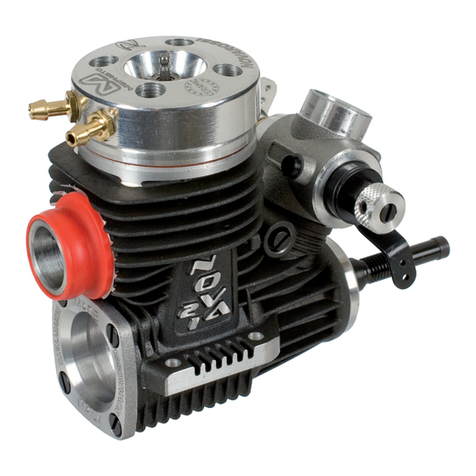
Novarossi
Novarossi MEPHISTO.21 MARINE quick start guide

Nice
Nice SPIN Series Instructions and warnings for the fitter
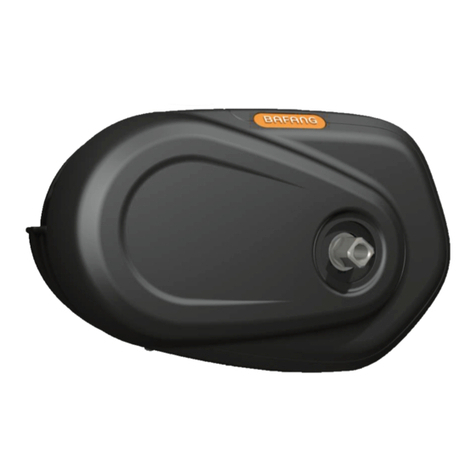
BAFANG
BAFANG M400 user manual
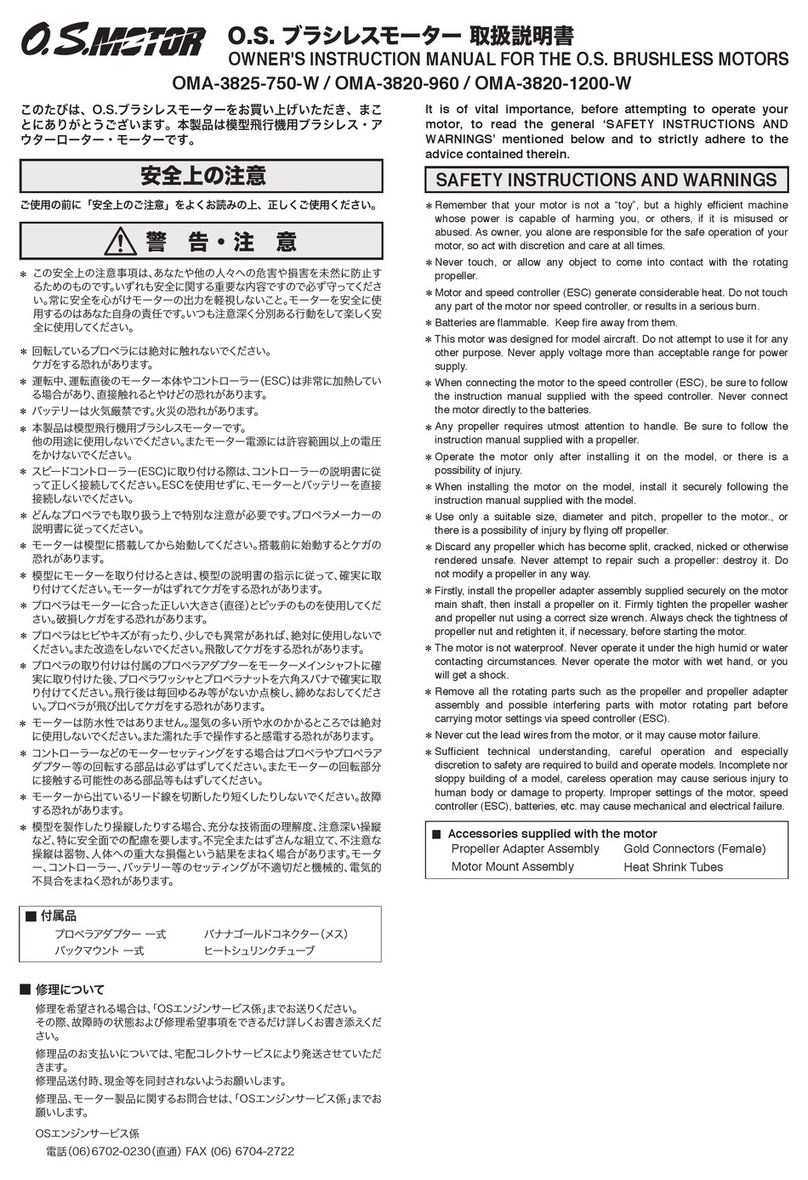
O.S. engine
O.S. engine OMA-3825-750-W Owner's instruction manual
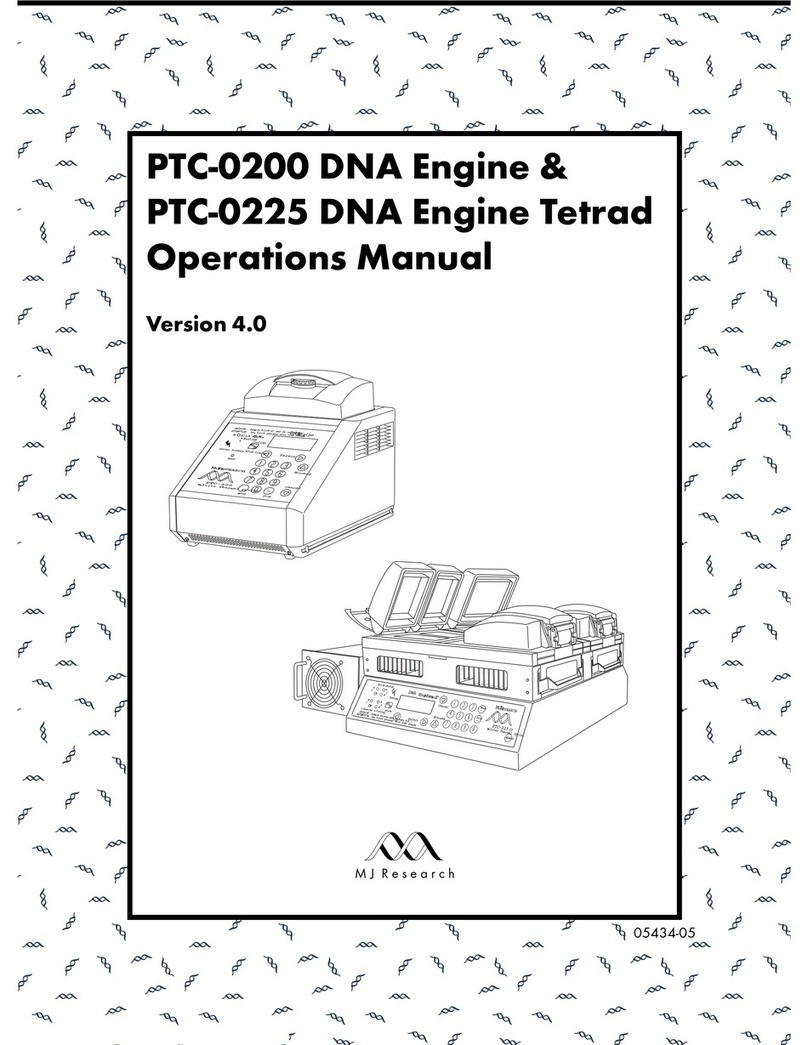
MJ Research
MJ Research PTC-0200 Operation manual

Esco
Esco KM25 Mounting and operating instruction

Briggs & Stratton
Briggs & Stratton 106200 Repair manual
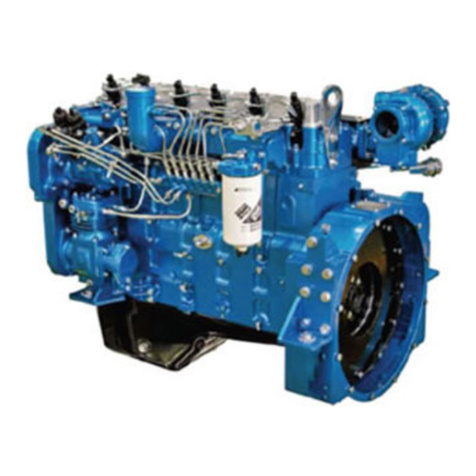
SDEC
SDEC D Series Operation and maintenance manual

Avco Lycoming
Avco Lycoming O-320 Series Operator's manual
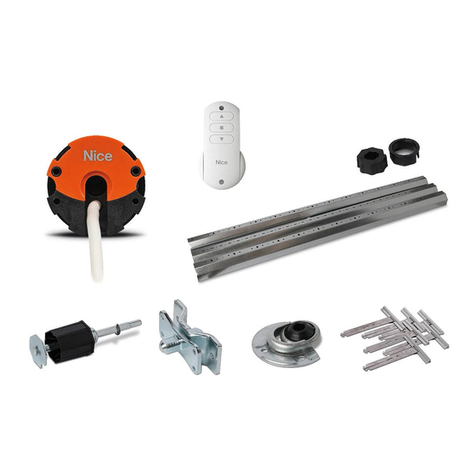
Nice
Nice RMEKIT AXS 3017 Instructions and warnings for installation and use
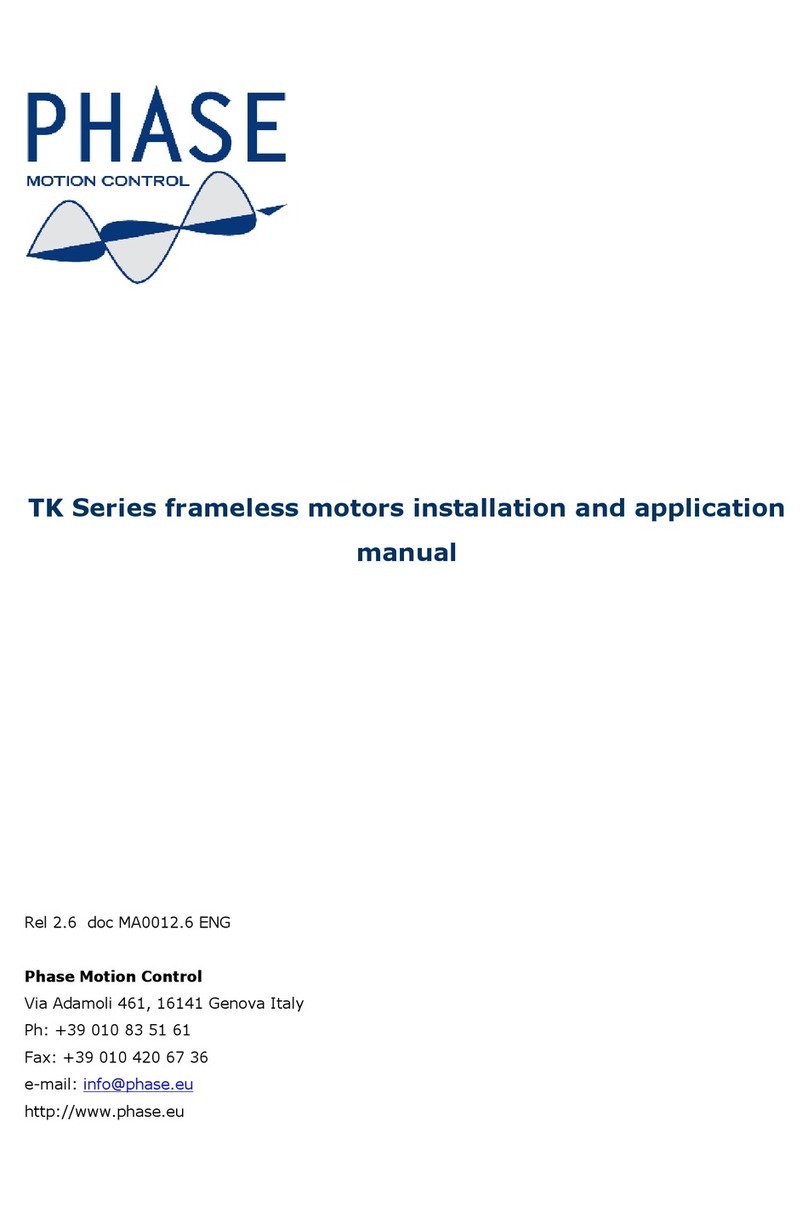
Phase
Phase TK Series Installation and application manual
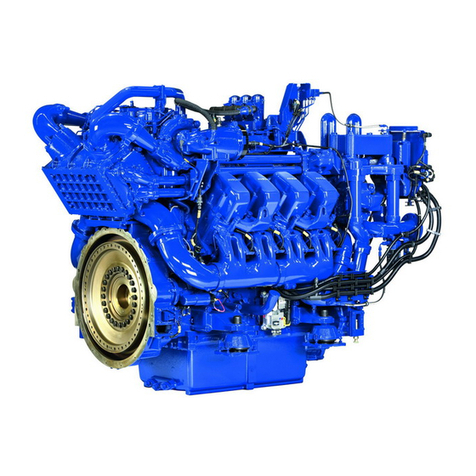
MTU
MTU 8V4000M*3 series operating instructions
